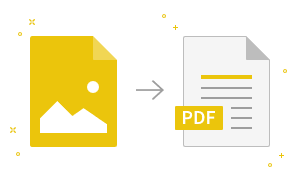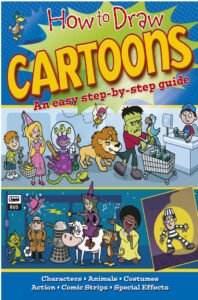TS Grewal Accountancy Class 11 Solutions Chapter 3 Accounting Procedures Rules of Debit and Credit
TS Grewal Accountancy Class 11 Solutions Chapter 3 Accounting Procedures Rules of Debit and Credit are part of TS Grewal Accountancy Class 11 Solutions. Here we have given TS Grewal Accountancy Class 11 Solutions Chapter 3 Accounting Procedures Rules of Debit and Credit.
Question 1.
Following accounts are being maintained in the books of Shri Ashok. Classify them into Personal, Real and Nominal Accounts:
(i) Land and Building
(ii) Excise Duty
(iii) Creditors
(iv) Capital
(v) Motor Vehicles
(vi) Goodwill
(vii) Investments
(viii) Salary
(ix) Debtors
(x) Bad Debts
(xi) Depreciation
(xii) Wages
(xiii) Repairs
(xiv) Ramesh, a debtor
(xv) Interest Received
(xvi) Bank Overdraft
(xvii) Purchase Returns
(xviii) Drawings
(xix) Freight
(xx) Return Inwards.
Solution:

Question 2.
Clasify the follwoing into Assets, Liabilities, Capital, Expenses and Revenue:
(i) Land
(ii) Investments
(iii) Building
(iv) Interest Received
(v) Salary
(vi) Bank Overdraft
(vii) Debtors
(viii) Creditors
(ix) Bad Debts
(x) Capital
(xi) Depreciation
(xii) Motor Vehicles
(xiii) Freight
(xiv) Wages
(xv) Goodwill
(xvi) Repairs
Solution:

Question 3.
Classify the following into assets, liabilities, capital, revenue, and expenses:
(i) Plant and Machinery
(ii) Bank Loan
(iii) Sales
(iv) Rent
(v) Discount Received
(vi) Carriage Inwards
(vii) Carriage outwards
(viii) Purchases
(ix) Bills Payable
(x) Wages
(xi) Advance Income
(xii) Accrued Income
(xiii) Goodwill
(xiv) Furniture and Fixtures
(xv) Outstanding Expenses
(xvi) Capital
Solution:

Question 4.
On which side will the increase in the following accounts be recorded ? Also, state the nature of the account:
(i) Furniture A/c
(ii) Mohan (proprietor)
(iii) Salary A/c
(iv) Purchases A/c
(v) Sales A/c
(vi) Interest Paid A/c
(vii) Sohan (Creditor)
(viii) Ram (Debtor)
Solution:

Question 5.
On which side will the decrease in the following accounts be recorded ? Also, state the nature of the account:
(i) Cash
(ii) Bank Overdraft
(iii) Outstanding salary paid
(iv) Outstanding Rent
(v) Prepaid Insurance
(vi) Mohan, Proprietor of the business
Solution:


Question 6.
From the following Transactions, state the nature of account and state which account will be debited and which account credited:
(i) Manu started business with cash – ₹ 1,00,000
(ii) He purchased furniture for business – ₹ 20,000
(iii) Purchase goods on credit from Anshul – ₹ 6,000
(iv) Paid to his creditor, Anshul – ₹ 2,000
(v) Paid salary to his clerk – ₹ 1,000
(vi) Paid Rent – ₹ 500
(vii) Received Interest – ₹ 200
Solution:

Question 7.
Analyse the following transactions, state the nature of accounts and state which account will be debited and which account credited:

Solution:

Question 8.
Open a ‘T’ shape account for machinery and put the following transactions on the proper side:

Solution:

Question 9.
Open a ‘T’ shape Cash Account. Put the following transactions on the proper side and balance the account:
(i) Mohan started business with cash – ₹ 40,000
(ii) Purchased Goods – ₹ 20,000
(iii) Sold Goods – ₹ 24,000
(iv) Paid Rent – ₹ 400
(v) Paid salaries – ₹ 600
(vi) Drew for personal use – ₹ 1,000
Solution:

Question 10.
Open a ‘T’ shape account of creditor, Rakesh and write the following transactions on the proper side:
(i) Goods purchased from Rakesh on credit – ₹ 50,000
(ii) Goods returned to Rakesh for – ₹ 5,000
(iii) Paid to Rakesh – ₹ 20,000
(iv) Purchase goods from Rakesh on credit – ₹ 10,000
Solution:

Question 11.
Open a ‘T’ shape account of debtor ‘Brij’ and write the following transactions on the proper side:
(i) Sold goods to Brij on credit – ₹ 25,000
(ii) Cash received from Brij – ₹ 10,000
Discount allowed to him – ₹ 500
(iii) Goods returned by Brij – ₹ 5,000
Solution:

Question 12.
Put the following on the proper side of a Cash Account, a Debtor’s Account and a Creditor’s Account:
(i) Sold goods to Sanjay on credit – ₹ 50,000
(ii) Sold goods to Mohan for cash – ₹ 20,000
(iii) Purchased goods from Ram on credit – ₹ 25,000
(iv) Cash received from Sanjay – ₹ 19,000
(v) Goods returned by Sanjay – ₹ 2,000
(vi) Paid rent – ₹ 500
(vii) Cash paid to Ram – ₹ 15,000
Solution:

Question 13.
From the following particulars, prepare the proprietor’s Capital Account:
1st April, 2017 – Commenced business with cash – ₹ 2,00,000
31st March, 2018 – Net Loss as per Profit and Loss Account – ₹ 18,000
31st March, 2018 – Drawings during the period – ₹ 15,000
Balance the same and explain what the closing balance indicates.
Solution:

Question 14.
From the following particulars, prepare the proprietor’s Capital Account:

Solution:

We hope the TS Grewal Accountancy Class 11 Solutions Chapter 3 Accounting Procedures Rules of Debit and Credit help you. If you have any query regarding TS Grewal Accountancy Class 11 Solutions Chapter 3 Accounting Procedures Rules of Debit and Credit.

